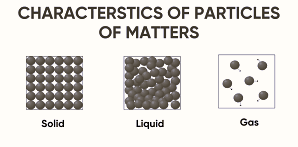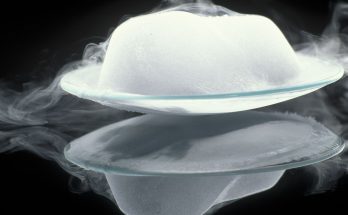Introduction to Matter and Its Properties
Matter is anything that has mass and occupies space. It exists in three main states: solid, liquid, and gas. The properties of matter depend on how its particles are arranged and how they move. Understanding these properties is important in science and in everyday life.
In this chapter, we will explore the following key concepts:
- Particulate Nature of Matter: How matter is made up of tiny particles.
- Diffusion: The movement of particles from areas of high concentration to low concentration.
- States of Matter: The characteristics of solids, liquids, and gases.
- Changes in State: How matter changes from one state to another, such as from solid to liquid or liquid to gas.
- Effect of Temperature and Pressure: How heating and cooling affect the behavior of matter.
The activities in this chapter will help you understand these concepts through simple experiments. You will observe how particles of matter interact with each other, how they move, and how temperature and pressure can change the state of matter.
Also Check – Chapter 1 -MATTER IN OUR SURROUNDINGS -Class 9 – Simplified Notes
Dilution Experiment
Objective: To demonstrate the small size of matter particles by observing how potassium permanganate or Dettol spreads in water.
Summary: Add a small quantity of potassium permanganate or Dettol to water, mix, and dilute repeatedly. Observe how the color or smell persists, even after multiple dilutions, showing that matter consists of tiny particles that divide and spread.
Click here for detailed explanation of Dilution Experiment
Activity 1.1: Demonstrating Space Between Particles
Objective: To show that matter has space between particles by dissolving sugar or salt in water.
Summary: Add sugar or salt to water and stir. Observe that the water level doesn’t rise, indicating that the dissolved particles occupy spaces between water molecules.
Click here for detailed explanation of Activity 1.1
Activity 1.2: Observing Diffusion in Liquids
Objective: To observe diffusion in liquids using examples like making tea or lemonade.
Summary: Add tea leaves to hot water or mix sugar and lemon juice in water. Observe how particles of one substance spread into another, forming a uniform mixture due to diffusion.
Click here for detailed explanation of Activity 1.2
Activity 1.3: Diffusion of Incense Stick Smell
Objective: To observe diffusion in gases using the smell of an incense stick.
Summary: Place an incense stick in a room and light it. Observe how the smell spreads across the room, showing that gas particles move freely and mix due to diffusion.
Click here for detailed explanation of Activity 1.3
Activity 1.4: Adding Ink and Honey to Water
Objective: To observe diffusion and intermixing in liquids using ink and honey.
Summary: Add ink and honey to separate glasses of water. Observe how ink spreads quickly, while honey takes longer to dissolve, demonstrating diffusion rates and intermixing of particles.
Click here for detailed explanation of Activity 1.4
Activity 1.5: Comparing Diffusion Rates
Objective: To compare diffusion rates in hot and cold water using potassium permanganate or copper sulfate.
Summary: Add a crystal of the substance to hot and cold water. Observe that diffusion occurs faster in hot water due to higher particle movement.
Click here for detailed explanation of Activity 1.5
Activity 1.6: Modeling Forces Using Human Chains
Objective: To model the forces of attraction between particles in solids, liquids, and gases using human chains.
Summary: Create human chains with varying levels of tightness to represent the strength of forces in different states of matter. Observe which chain is easiest to break.
Click here for detailed explanation of Activity 1.6
Activity 1.7: Testing Bond Strength in Solids
Objective: To test the strength of bonds in solids like iron nails, chalk, and rubber bands.
Summary: Try to bend or break each solid. Observe that rigid materials like iron have strong bonds, while brittle substances like chalk have weaker bonds.
Click here for detailed explanation of Activity 1.7
Activity 1.8: Surface Tension of Water
Objective: To demonstrate surface tension using water and fingers.
Summary: Place your finger on the surface of still water and observe resistance to breaking, showing that cohesive forces create surface tension.
Click here for detailed explanation of Activity 1.8
Activity 1.9: Properties of Solids
Objective: To investigate solids’ definite shape and incompressibility.
Summary: Examine objects like a pen or book to observe their fixed shape and volume. Try compressing them and note their rigidity and incompressibility.
Click here for detailed explanation of Activity 1.9
Activity 1.10: Fluidity and Volume Retention of Liquids
Objective: To explore liquids’ ability to flow and maintain a fixed volume.
Summary: Pour liquids into different containers and observe how they take the container’s shape but retain the same volume.
Click here for detailed explanation of Activity 1.10
Activity 1.11: Observing States of Matter
Objective: To identify solids, liquids, and gases in daily life.
Summary: Observe objects like books (solid), water (liquid), and air (gas). Note their properties, including shape, volume, and compressibility.
Click here for detailed explanation of Activity 1.11
Activity 1.12: Melting Ice and Boiling Water
Objective: To observe state changes from solid to liquid and liquid to gas.
Summary: Heat ice to observe melting at 0°C, then boil the water to see it vaporize at 100°C, demonstrating latent heat during state changes.
Click here for detailed explanation of Activity 1.12
Activity 1.13: Sublimation of Camphor
Objective: To observe sublimation, where a solid changes directly to a gas.
Summary: Heat crushed camphor in a china dish covered by an inverted funnel. Observe solid camphor turning into gas without becoming liquid.
Click here for detailed explanation of Activity 1.13
Activity 1.14: Exploring Evaporation Rates
Objective: To study how factors like wind, humidity, and surface area affect evaporation.
Summary: Place water under varying conditions, such as a fan, cupboard, and rainy day. Observe the differences in evaporation rates.

